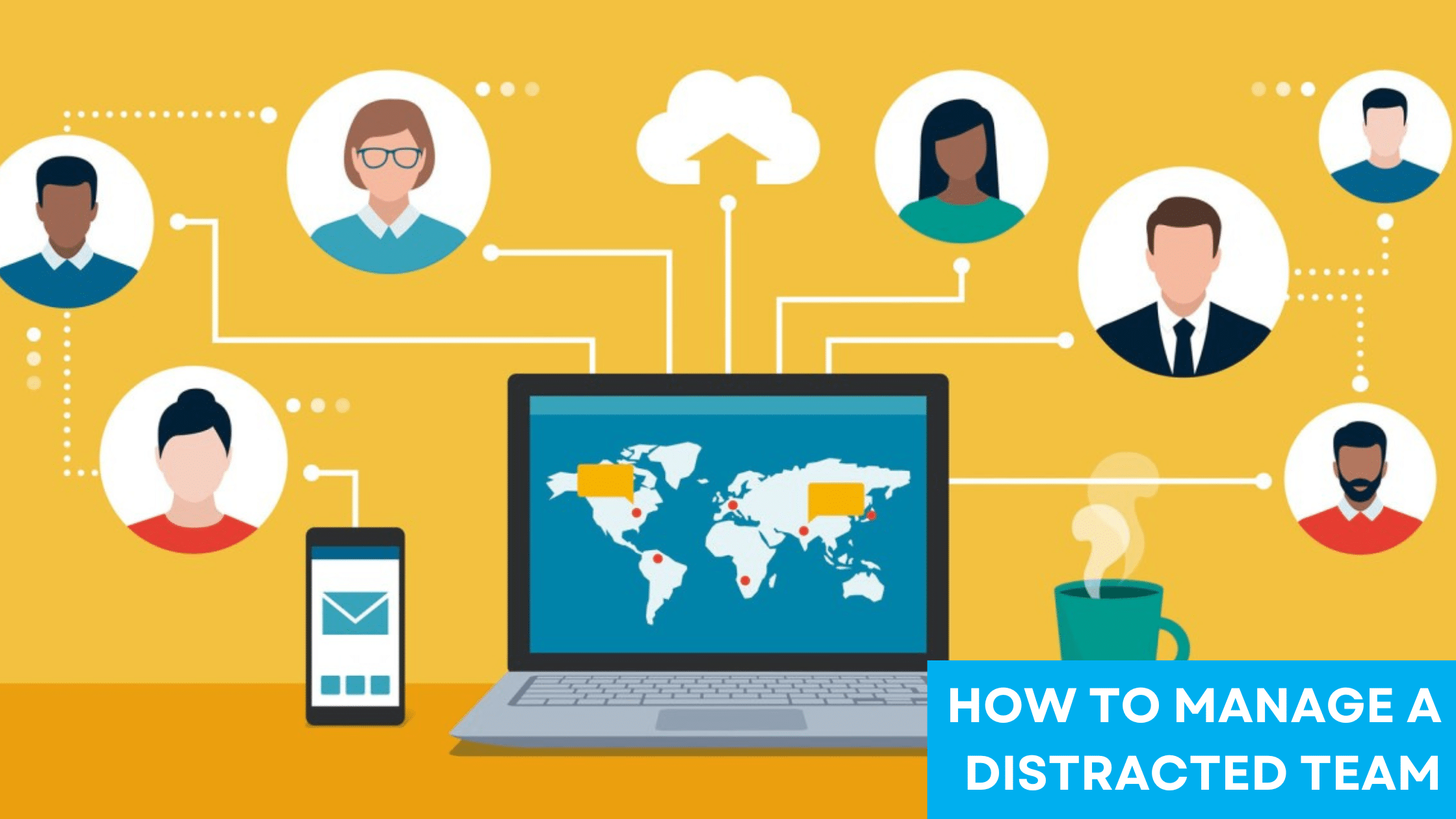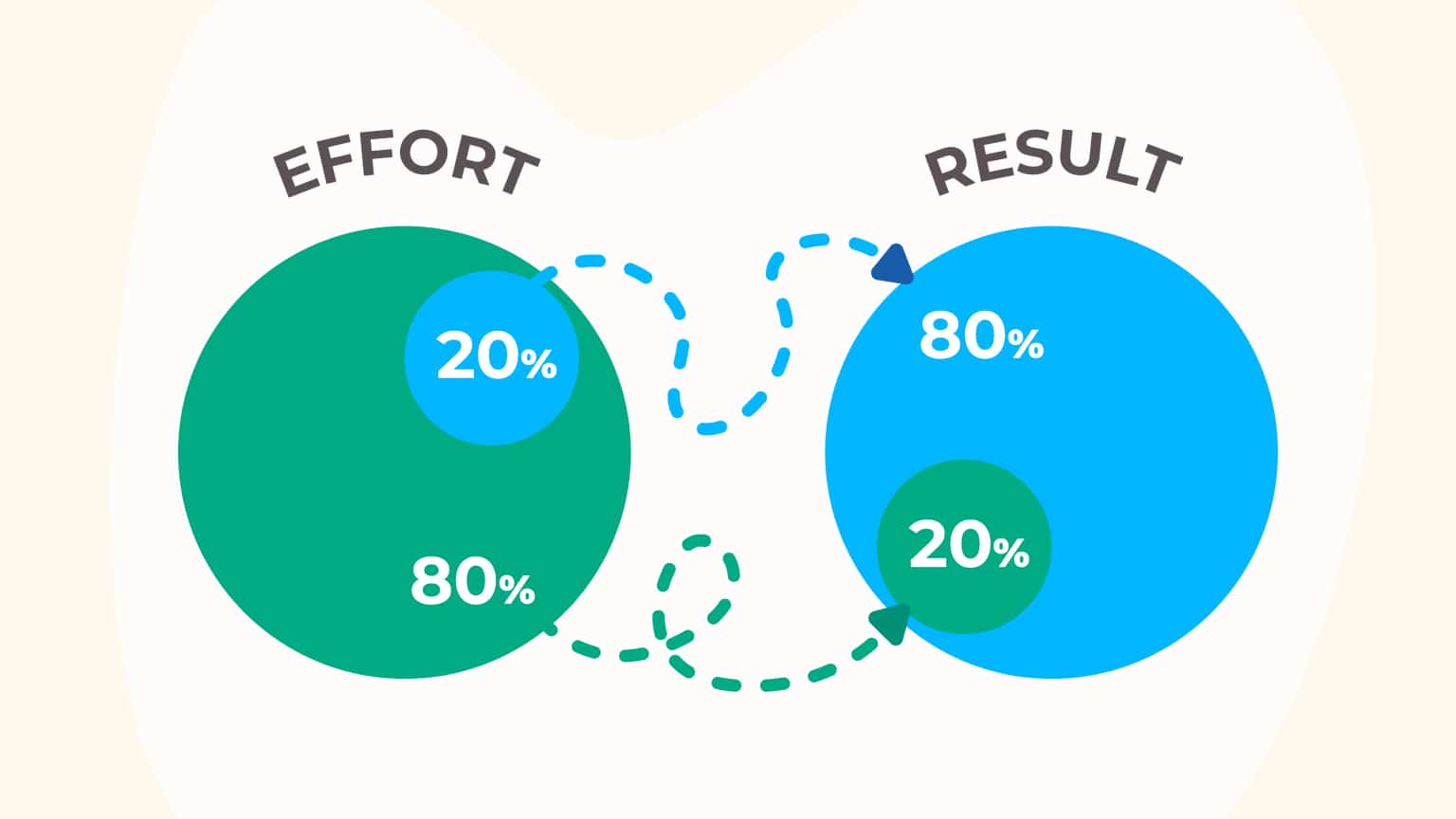Understanding Distractions in the Workplace
Effective management of workplace distractions is key to boosting productivity.
Common distractions include noise, social media, and frequent interruptions.
Recognizing these distractions can help individuals and teams stay focused on their tasks.
Defining Distraction and Its Impact on Productivity
Distraction in the workplace occurs when employees are diverted from their primary tasks by external or internal interruptions.
This can lead to a significant drop in productivity as the focus shifts away from work-related goals.
For example, excessive notifications and the allure of social media can break concentration, leading employees to spend more time on less productive activities.
This loss of focus can result in missed deadlines and lower overall work quality.
Understanding the effects of these distractions helps identify ways to minimize their impact.
Common Distractions and Their Sources
Several distractions frequently interrupt workplace productivity.
Smartphones and other devices bring endless alerts and updates from apps and emails that pull attention away from work.
Noise from open office environments or busy workspaces can further disrupt concentration.
Conversations among colleagues, while sometimes necessary, can also lead to a loss of focus.
Identifying the sources of these distractions allows organizations to create strategies to manage them effectively.
Techniques such as designated quiet zones or scheduled periods for notifications can help reduce unnecessary interruptions.
Evaluating Distractions at Work: Noise, Interruptions, Social Media
Noise is one of the most persistent distractions in modern work environments.
It can come from phones ringing, people talking, or machinery running.
Interruptions, such as colleagues asking questions or impromptu meetings, disrupt workflow and thought processes.
Social media is a powerful distraction, as it offers instant access to entertainment and social interaction.
Each distraction type requires tailored solutions.
For instance, noise-canceling headphones might help with auditory distractions, while time management practices can reduce the impact of social media.
Addressing these issues can enhance focus and overall productivity.
Creating a Culture of Focus
Fostering a focused team environment requires creating spaces that support deep work and implementing structures to protect attention spans.
Simple changes in the workplace can significantly impact how well teams maintain focus and avoid distractions.
Promoting a Team Environment Conducive to Concentration
A team environment that prioritizes focus sets the foundation for effective teamwork.
One approach is to design physical and digital spaces that minimize distractions.
Quiet zones, separated from bustling areas, can help team members concentrate on tasks without interruptions.
Digital tools also play a role by limiting notifications and non-essential communications.
Encourage regular focus sessions, where team members dedicate uninterrupted blocks of time to work on complex tasks.
This practice helps enhance productivity and allows employees to engage more deeply with their work.
In addition, promoting open discussions on project goals and strategies encourages a shared focus.
When everyone understands team objectives, it becomes easier to align individual efforts with overarching aims.
Scheduled meetings are designed to keep all team members informed and ensure everyone remains on the same page without constant disruptions.
Setting Boundaries to Guard Attention Spans
Setting clear boundaries is crucial to maintaining attention spans in a busy workplace.
Encourage team members to turn off non-essential notifications during work hours.
This simple step helps reduce distractions from continuous alerts and lets individuals apply themselves fully to their tasks.
Encouraging regular breaks allows employees to recharge, which refreshes focus and improves overall efficiency.
Breaks can be structured by adopting a schedule of short, timed pauses, keeping fatigue at bay while maintaining energy levels throughout the day.
Implementing rules about communication can also guard attention spans.
For instance, designating specific times for emails or messaging app discussions ensures that team members are not constantly interrupted.
Creating a culture where focused work is respected helps foster an environment where productivity thrives.
Strategies for Individual Focus Enhancement
Effective focus strategies can significantly boost productivity and reduce stress.
Techniques such as time blocking and using specific tools like noise-canceling headphones can help individuals manage tasks better and minimize distractions.
Employing these strategies allows for deeper concentration and more efficient work.
Time Management Techniques
Time blocking is an effective way to manage tasks.
By setting specific blocks of time for each activity, individuals can better focus on one task at a time, reducing the tendency to multitask.
This method encourages clear priorities and helps avoid switching between tasks, which can disrupt concentration.
Creating a daily schedule with designated time slots for each task helps.
It allows for breaks between focused work periods, which is essential for maintaining mental sharpness.
Short, regular breaks can prevent burnout and improve overall performance.
Lists are useful for organizing tasks by priority.
Writing down goals for each time block can keep individuals on track and provide a sense of accomplishment as items are completed.
This structured approach ensures that time is used effectively throughout the day.
Tools for Minimizing Distractions
Noise-canceling headphones are excellent for reducing background noise helping individuals maintain focus.
They are particularly useful in noisy environments, such as open offices or busy cafes, where distractions are common.
Using apps and browser extensions to block distracting websites during work time can also improve concentration.
These tools can limit access to social media and other non-essential sites, keeping attention on work-related tasks.
Implementing a clean workspace can also minimize distractions.
A tidy desk reduces visual clutter, allowing for a clearer mind.
Keeping only the necessary tools and materials within reach can create a more conducive work environment, enhancing overall focus and productivity.
Effective Leadership and Management Practices
Effective leadership involves establishing strong communication channels and setting clear expectations.
By fostering a supportive environment, leaders can help their teams limit distractions at work and maintain productivity.
Encouraging Team Leadership to Minimize Distractions
Leadership plays a key role in minimizing distractions in the workplace.
Leaders should promote shared responsibility among team members, encouraging them to take ownership of their roles.
This can be achieved by setting clear goals and empowering team members to use their skills to reach these objectives.
Regular check-ins can help identify distractions early.
Leaders should suggest techniques like time-blocking or the Pomodoro Technique to manage workloads effectively.
Additionally, offering flexibility in work hours can allow team members to work when they are most focused.
Leaders need to set an example by minimizing their own distractions.
This can involve reducing unnecessary meetings or avoiding multitasking, as these behaviors can disrupt focus.
By modeling attentive behavior, leaders encourage similar practices in their teams.
Fostering Open Communication and Clear Expectations
Clear communication is essential in managing distractions.
Establishing open communication channels ensures team members feel comfortable sharing challenges or concerns.
This can include using tools like instant messaging for quick updates or more formal platforms for detailed discussions.
Setting clear expectations helps team members understand their priorities.
Leaders should outline specific tasks and deadlines to guide the team’s focus and reduce uncertainty.
This clarity aids in maintaining attention to important objectives.
Regular feedback is important to address any ongoing issues.
Leaders should provide constructive insights, highlighting areas where team members excel and identifying potential areas for improvement.
This practice can help adjust strategies to suit evolving needs and minimize avoidable distractions.
Communicating Expectations and Goals
Setting clear expectations is crucial for team focus.
This involves defining clear agendas for meetings and establishing achievable deadlines.
These strategies can help teams avoid distractions and maintain productivity.
The Role of Clear Agendas in Team Meetings
A clear agenda is essential for successful team meetings. It sets the tone and keeps discussions focused.
Agendas should list key topics, objectives, and time limits for each item. This helps participants prepare and contributes to more effective discussions.
In team settings, a structured agenda keeps the meeting on track.
It reduces off-topic conversations and maximizes efficiency.
Sharing the agenda in advance allows team members to gather relevant data and think critically about the topics.
This preparation drives engagement and ensures everyone contributes meaningfully to the discussion.
Setting Achievable Deadlines for Better Focus
Deadlines guide teams in managing their workload and priorities.
Achievable deadlines help maintain productivity without causing stress.
They should challenge the team yet be realistic to prevent burnout.
Clear deadlines give a sense of direction and motivate team members to stay focused.
When setting deadlines, consider the complexity of tasks and available resources.
Encourage open communication with the team to discuss any potential obstacles in meeting deadlines.
This will align efforts and manage expectations effectively.
By setting achievable deadlines, teams can focus on their goals and minimize distractions.
Structuring the Work Environment
Creating an effective work environment involves organizing both physical and digital spaces.
Thoughtful design solutions can help reduce noise and other interruptions that lead to workplace distractions.
These strategies aim to boost focus and productivity.
Physical and Digital Workspace Organization
A well-organized workspace minimizes distractions.
In the physical sphere, keeping an orderly desk can aid concentration. Items should be arranged so that essentials are within easy reach and unnecessary clutter is removed. Using organizers or shelves can help keep things tidy.
Digitally, managing notifications and alerts can prevent disruptions.
It’s helpful to group related apps into folders and keep the desktop clean. Regularly updating software ensures that it runs smoothly, minimizing potential distractions due to glitches or delays.
Design Solutions to Reduce Noise and Interruptions
Noise reduction is crucial in maintaining productivity.
One solution involves creating quiet zones with soundproofing materials, such as acoustic panels, to absorb excess noise.
This approach offers team members a space to focus without interruptions from surrounding conversations or office machinery.
Implementing flexible workspaces can also reduce interruptions.
Allowing employees the choice of where to work based on their needs, whether in shared spaces or at individual desks, can help them choose what suits them best for focus.
Providing noise-cancelling headphones can also prove effective in busy environments.
Embracing Technology to Enhance Productivity
Harnessing technology can transform work environments by boosting productivity and minimizing distractions.
Using the right tools is crucial for keeping focus and ensuring efficient communication in teams.
Leveraging Apps to Block Digital Distractions
Many employees struggle with distractions like social media and email notifications.
Apps such as Freedom and Focus@Will can help block distracting websites and platforms, allowing users to work without interruptions.
These tools enable people to set schedules for when certain sites are accessible, ensuring dedicated work periods.
Notifications can be managed by adjusting settings, thereby reducing the urge to check every alert immediately.
This helps workers concentrate better, leading to improved productivity.
Utilizing Communication Tools Wisely
Effective use of communication tools is key to maintaining productivity in a team.
Platforms like Slack and Microsoft Teams offer several features that, if used smartly, enhance coordination among team members.
It’s important to set clear guidelines on when to use direct messages versus email, minimizing unnecessary communication.
Using group chats for important updates instead of bombarding inboxes with emails can also help manage information flow.
Regularly scheduled video meetings can ensure all team members stay aligned without constant back-and-forth messaging.
Adopting Best Practices for Meetings
To enhance productivity and reduce burnout, it’s crucial to keep meetings focused and prevent them from becoming overwhelming.
Implementing effective strategies can lead to more engaging and efficient team discussions.
Keeping Meetings On-Topic and Engaging
Ensuring that meetings stay on-topic requires setting clear agendas and objectives beforehand.
This helps participants understand the main goals and keeps discussions aligned with them.
Encouraging active participation by assigning roles, like a moderator or timekeeper, can maintain engagement.
Visual aids, such as slides or charts, can also improve focus.
When team members see information presented clearly, they are more likely to stay engaged.
Using an agenda-focused approach can help in avoiding tangents and time-wasting discussions.
Feedback at the end of meetings can highlight what worked well and areas for improvement. This feedback loop encourages constant refinement of meeting practices.
Prevention of Meeting Overload to Fight Burnout
Meeting overload can lead to burnout, affecting overall productivity and team morale.
One way to address this is by evaluating the necessity and frequency of meetings.
Not all meetings are essential, and some topics can be handled via email or collaborative platforms.
Limiting meeting duration is another effective strategy.
Shorter, more focused meetings prevent fatigue and make better use of everyone’s time.
Establishing a standard meeting length can help achieve this goal.
Creating a culture that values time and respects personal workloads helps reduce the stress that meetings can cause.
When team members feel that their time is respected, they are more likely to contribute positively, reducing burnout risks and enhancing productivity.
Managing Overwhelm and Reducing Burnout
Overwhelm and burnout can negatively affect a team’s focus and productivity.
Recognizing the signs and providing effective strategies can help maintain a healthy team culture.
Recognizing Signs of Overwhelm in Team Members
Team members may display several indicators when facing overwhelm.
Frequent mistakes or missed deadlines can suggest a loss of focus.
Changes in behavior, such as irritability or reduced communication, might signal stress.
Increased absenteeism or a decline in work quality are also important signs.
Understanding these signs helps in taking timely action.
Being attentive to team dynamics and regularly checking on team members can provide early clues to potential issues.
Leaders should be open to feedback, encouraging team members to express challenges they may be facing.
Techniques for Managing Stress and Avoiding Burnout
Supporting a team with effective stress management techniques is crucial.
Flexible scheduling can help employees balance their workload, reducing stress levels.
Encouraging breaks and time off can prevent exhaustion.
Offering resources like stress management workshops or mindfulness sessions also supports well-being.
Promoting a supportive team culture where members feel valued and respected reduces burnout risks.
Clear communication about expectations and priorities helps keep team members focused.
Leaders should model stress management behaviors themselves, showing the team healthy ways to manage pressure.
Conducive Team Meeting Strategies
Effective team meetings require careful planning to engage all members and minimize disruptions.
Focus on creating an inclusive environment and maintaining uninterrupted time to boost team productivity.
Planning for Engagement and Inclusivity in Discussions
A successful team meeting should ensure every voice is heard.
Start by setting a clear agenda that outlines the topics to be discussed. This helps members prepare and feel engaged.
Distribute the agenda in advance so everyone knows what to expect.
Encourage participation by asking open-ended questions and rotating discussion leaders.
This approach can prevent a few voices from dominating the conversation, fostering a balanced dialogue.
It also promotes a sense of ownership and investment in the outcomes.
Utilize tools like visual aids or collaborative platforms to engage visual and interactive learners.
This variety can make the meeting more engaging and ensure inclusivity among team members.
Maintaining Uninterrupted Time During Team Collaboration
To maintain focus, allocate specific uninterrupted time for deep discussions.
Start by setting ground rules for meetings, emphasizing the importance of listening and reducing disruptions.
Encourage team members to turn off unrelated notifications and devices.
Limit meeting time to avoid fatigue.
Short and effective meetings are often more productive than drawn-out sessions.
Introduce breaks to keep energy levels up and maintain concentration.
Consider appointing a facilitator to keep the meeting on track and ensure everyone stays focused on the agenda.
This role helps manage any interruptions and allows the team collaboration to stay productive and effective.
Aligning Team Goals for Greater Focus
Aligning team goals helps reduce distractions by providing clear direction and purpose. It also increases productivity as team members understand how their roles contribute to overall targets. This provides focus and reduces the uncertainty that can derail team efforts.

Establishing Shared Objectives to Reduce Uncertainty
When team members share a common objective, they feel more grounded and less distracted.
Shared goals can be achieved by involving team members in the planning process. This encourages buy-in and commitment.
Clear communication about objectives is key.
Leaders should provide regular updates to reduce uncertainty and minimize distractions.
Meetings can be used to align everyone toward the same targets.
This ensures that all team members understand their priorities and how they fit into the broader goals.
Setting specific, measurable outcomes helps maintain focus.
Teams should have well-defined key performance indicators (KPIs) that act as benchmarks.
These KPIs allow everyone to track progress and remain motivated.
Consistent monitoring and feedback help adjust any deviations and keep the team firmly on track.
Connecting Individual Tasks to Team Targets
Breaking down team goals into individual tasks enhances focus and productivity.
Each team member’s role should clearly link to team targets.
This connection allows employees to see how their work impacts the overall success of the project.
Leaders can help employees by clarifying how their tasks contribute to shared objectives.
Clear task lists and responsibilities ensure everyone knows what is expected. This also prevents the distractions that arise from task ambiguity.
Regular check-ins support team members in staying aligned.
These check-ins should address progress, challenges, and any needed support.
When team members see how their daily efforts connect to team success, it enhances motivation and focus, driving productivity forward.
Conclusion
Managing a distracted team requires careful attention to maintaining focus and productivity.
Leaders can start by understanding the specific distractions their team faces. It’s important to create a supportive environment where employees feel comfortable sharing their concerns.
Providing training to improve self-management skills is also crucial.
Encouraging employees to follow structured techniques, like the 50-minute focus method, can help. This involves working on a task for a set time before taking a break.
Clear communication is another key element. Setting priorities and aligning goals can help teams stay on track.
Regular meetings might also aid in addressing any emerging distractions before they become larger issues.
Using tools and apps to track productivity and limit time on distracting activities can be beneficial.
For example, configuring designated times for email can help reduce interruptions. Empowering team members to manage their own time more effectively fosters independence and accountability.
Leaders should also consider the work environment itself.
Adjusting workspace layout or offering remote work options may decrease distractions. A flexible approach can be more effective for different team dynamics. This reflection on the environment shows that sometimes, small changes can have a big impact.
Lastly, maintaining team morale is essential. Recognizing achievements and encouraging a positive atmosphere will keep motivation high.
Regular feedback and appreciation enable team growth and contribute to a focused, efficient workplace.



